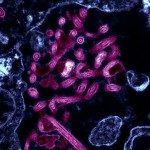Link to Pubmed [PMID] – 34918868
Link to DOI – 10.1002/hep4.1879
Hepatol Commun 2022 May; 6(5): 1005-1015
Senegal introduced the infant hepatitis B virus (HBV) vaccination in 2004 and recently committed to eliminating hepatitis B by 2030. Updated epidemiological data are needed to provide information on the progress being made and to develop new interventions. We estimated the prevalence of hepatitis B surface antigen (HBsAg) in children and adults living in rural Senegal and assessed hepatitis B treatment eligibility. A cross-sectional population-based serosurvey of HBsAg was conducted in 2018-2019 in a large sample (n = 3,118) of residents living in the Niakhar area (Fatick region, Senegal). Individuals positive for HBsAg subsequently underwent clinical and biological assessments. Data were weighted for age and sex and calibrated to be representative of the area’s population. Among the 3,118 participants, 206 were HBsAg positive (prevalence, 6.9%; 95% confidence interval [CI], 5.6-8.1). Prevalence varied markedly according to age group in individuals aged 0-4, 5-14, 15-34, and ≥35 years as follows: 0.0% (95% CI, 0.00-0.01); 1.5% (95% CI, 0.0-2.3); 12.4% (95% CI, 9.1-15.6); and 8.8% (95% CI, 6.1-11.5), respectively. Of those subsequently assessed, 50.9% (95% CI, 41.8-60.0) had active HBV infection; 4 (2.9%; 95% CI, 0.9-9.4) were eligible for hepatitis B treatment. Conclusion: In this first population-based serosurvey targeting children and adults in rural Senegal, HBsAg prevalence was very low in the former, meeting the World Health Organization’s (WHO) < 1% HBsAg 2020 target; however, it was high in young adults (15-34 years old) born before the HBV vaccine was introduced in 2004. To reach national and WHO hepatitis elimination goals, general population testing (particularly for adolescents and young adults), care, and treatment scale-up need to be implemented.


